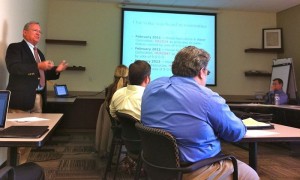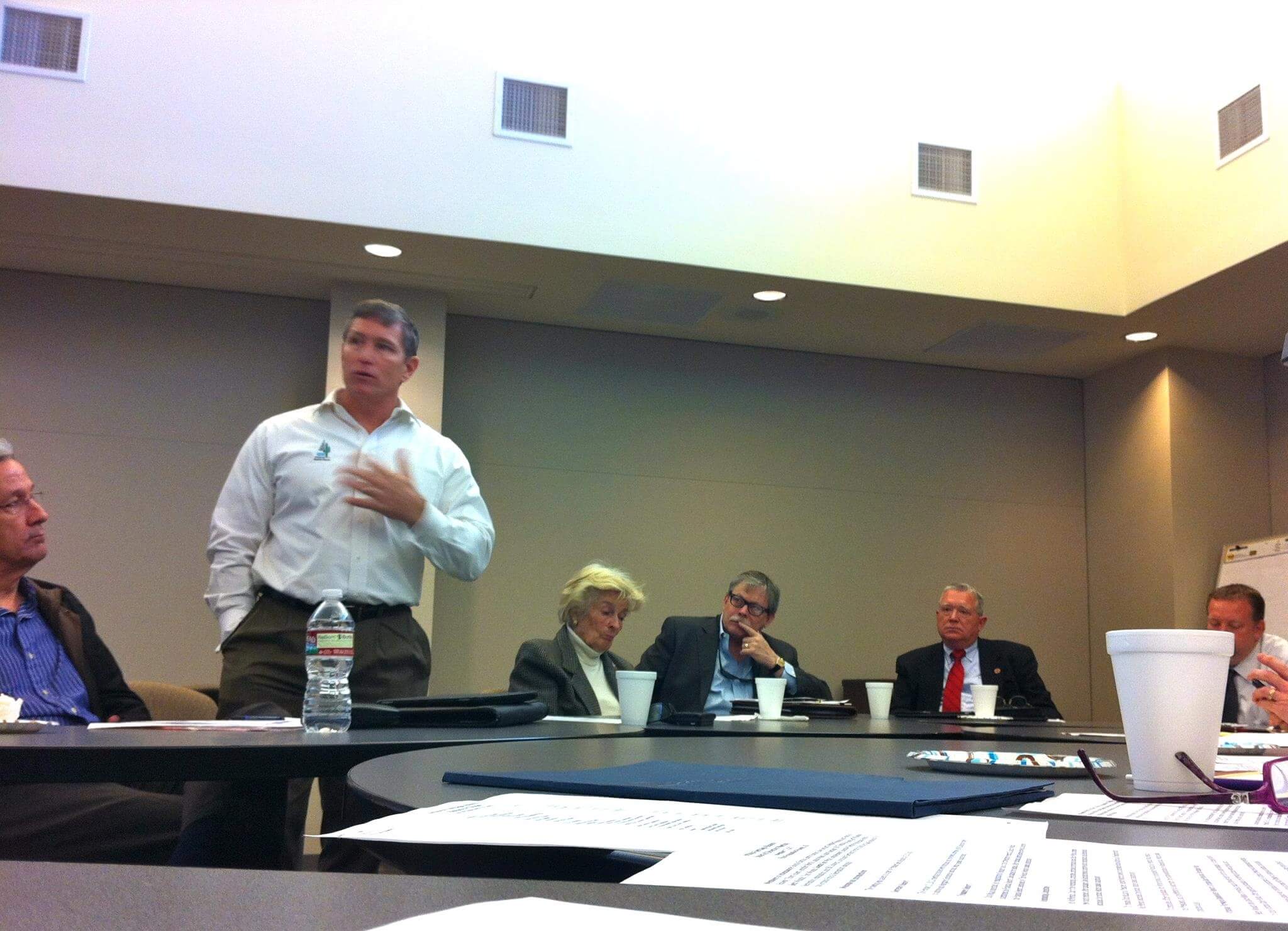[Source: Bonnie Bariola, Florence Reminder] –The Arizona Heritage Alliance is a nonprofit organization that was formed in 1992 for the purpose of working to prevent the Arizona State Legislature from taking or eliminating the Heritage Fund. Unfortunately during difficult economic times, in 2009 the Legislature took away the Arizona State Parks portion of the fund and in 2010 completely eliminated the language from the Arizona Revised Statutes. Fortunately the Arizona Game and Fish Commission’s $10 million portion of the Heritage Fund remains intact.
The Alliance continues to meet, with its goal now being to get the Arizona State Parks portion of the Heritage Fund restored. At its June 25th meeting, the board members discussed several methods for funding a Heritage Fund as well as possible methods for restoration of the fund.
2nd Century Initiative
Former Phoenix Mayor John Driggs was guest speaker at the meeting presenting a project he is spearheading. Former Mayor Driggs chaired the Arizona Centennial Committee and in this capacity determined the state capitol and other state buildings should be rehabilitated as a showcase for not only Arizona but the entire United States.
He is promoting the Arizona Second Century Initiative that would be the rehabilitation of the Government Mall extending from the State Capitol to Hunt’s Tomb in Papago Park. In addition to the Arizona State Capitol and Hunts Tomb it would include the El Zaribah Shrine Building, Carnegie Library, Tovrea Castle and Grounds, National Guard Arsenal, the Arizona History Museum, the Sandra Day O’Connor house, and the Eisendrath House.
Driggs suggests the following “Arizona’s second century initiative would be ‘Building Harmony’ by applying community values recalled by our landmarks in shaping plans for the future.” He further says “Arizona would launch its second century by preparing several iconic venues to reflect the state’s cultural heritage. Respectfully rehabilitated landmark buildings will provide a lasting legacy for Arizona’s second century.”
He suggests the first phase of this project should be the complete rehabilitation of the El Zaribah Shrine Building. He would like to find private donors for this purpose and is hoping such donors will come forward. Once complete this building would provide a multipurpose assembly facility serving as a public forum and special events venue for state and local government.
Plans for the Carnegie Library would be to provide space for a special civics education center to promote civil dialogue and civic action. This new use could complement the existing uses in the library and correlate to the goals of the O’Connor House which is located in Papago Park.
It is his dream that Tovrea Castle and Gardens, owned by the city of Phoenix, could become the first Arizona State Park to be located in Maricopa County. It would be a joint venture with the city of Phoenix as owner with the Arizona State Parks system becoming a partner. Opened to the public in 2012, reservations for tours have far exceeded expectations and are booked months in advance. The Tovrea Carraro Society provides thousands of volunteer hours by docents leading the tours and handling all aspects of the daily operations of the castle.
Located in Papago Park, the O’Connor House, home of the first woman to serve as a United States Supreme Court Justice, was moved from its original site in Paradise Valley to Tempe. It is now known as “The O’Connor House and Center for Civic Discourse” and provides a venue “for people and organizations to come together and resolve conflicts or disagreements peacefully.”
Hunt’s Tomb contains the remains of Arizona’s first governor, his wife and five other family members. Elected in 1912 when Arizona became a state, he ended his seventh term in 1933. After a visit to Egypt, he and his wife became fascinated with its pyramids which resulted in him seeking permission from the legislature to build a pyramid tomb. Permission was granted and the tomb was built in its current site.
So what does all this have to do with the Arizona Heritage Alliance? If the Alliance can be successful in getting the Heritage Fund Grant Program reinstated, it would provide seed monies for the rehabilitation of many of these historic buildings. If Heritage Fund Grants were available, it would be easier to obtain private donations to complete the rehabilitation of these valuable historic buildings and resources.



You must be logged in to post a comment.